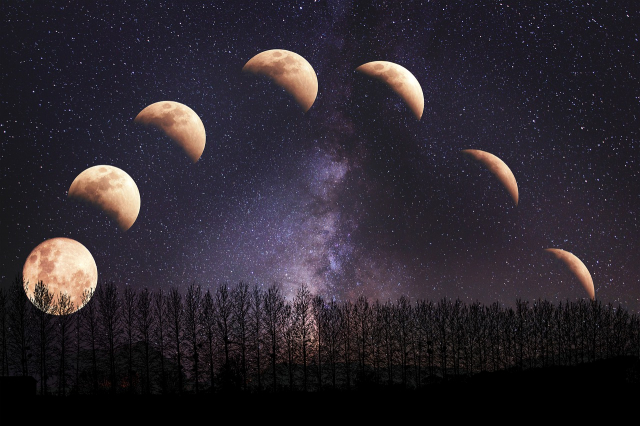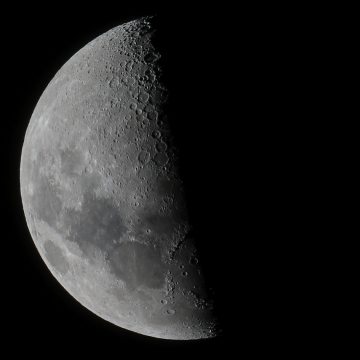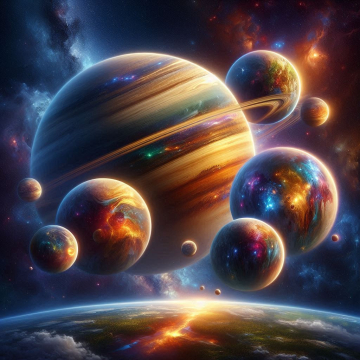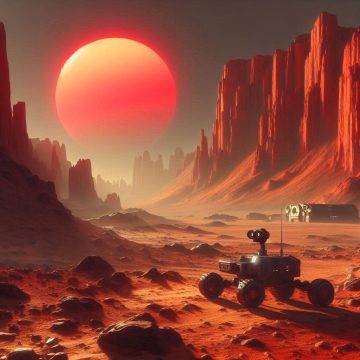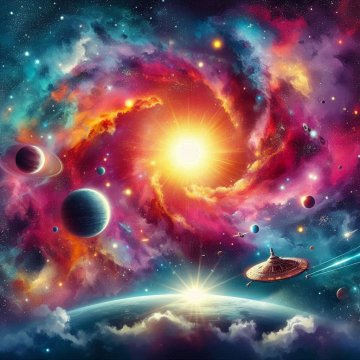The New Moon or New Moon passes when the Moon is between the Sun and the Earth and, therefore, we do not see it. It is there, but the face it shows us does not receive sunlight during this phase of the moon.
In the First Quarter, the Earth, the Sun and the Moon create a right angle, so that half of the Moon can be seen in the sky in its growth span. The illuminated area is to the right in the northern hemisphere and what looks like a capital D; in the southern hemisphere the illuminated area is on the left.
The Full Moon or full moon happens when the Earth is located between the Moon and the Sun; it receives the sun's rays on its face (which is observed), therefore, a whole circle is visualized. In this phase the Moon reaches its zenith at midnight.
Lately, in the Last Quarter the 3 bodies once again create a right angle, so the other half of the face of our moon can be seen in the sky: the left area in the northern hemisphere illuminated (a D or an inverted C ) and the area to the right in the south (a D in normal position).
There are many people who are always aware of what phase the moon is in , and this is because many of these same people say that "the harvest is better in such a stage of the moon" or that "if I cut my hair in such a phase will grow more abundantly ”and many other things.
How and when can the phases of the Moon be observed?
The orbit of the Earth creates an angle of 5º with the orbit of the Moon, so that when the Moon is or is between the Earth and the Sun one of its hemispheres, the one that we observe, remains in the dark area , and Therefore, it is invisible to our sight: we call this or know it as the new moon or new moon.
As the Moon continues with its translational movement, the illuminated surface that is observed from the Earth grows, it will go through the shape of a concave crescent, until 7 days later it shows us half of its illuminated hemisphere ; This phase of the moon is the 4th crescent.
Then it continues to grow and has the shape of a gibbous or convex crescent. 7 days later you will perceive the entire hemisphere illuminated: it is the so-called full moon or full moon.
After this, a week later, the illuminated surface begins to decrease, passing through the shape of a gibbous or convex waning Moon, until it has half illuminated, but, this time, on the other side of the moon: it is the 4th waning .
These are the phases of the moon, it continues to shrink, passes through the concave waning shape and we see less and less of it. At the end of the 4th week it reaches its main position as a new moon and vanishes from our sight. All the phases of the Moon have been completed and a new lunation cycle begins again.
